4 App Retention Strategies for Retail and D2C to Boost Customer Engagement
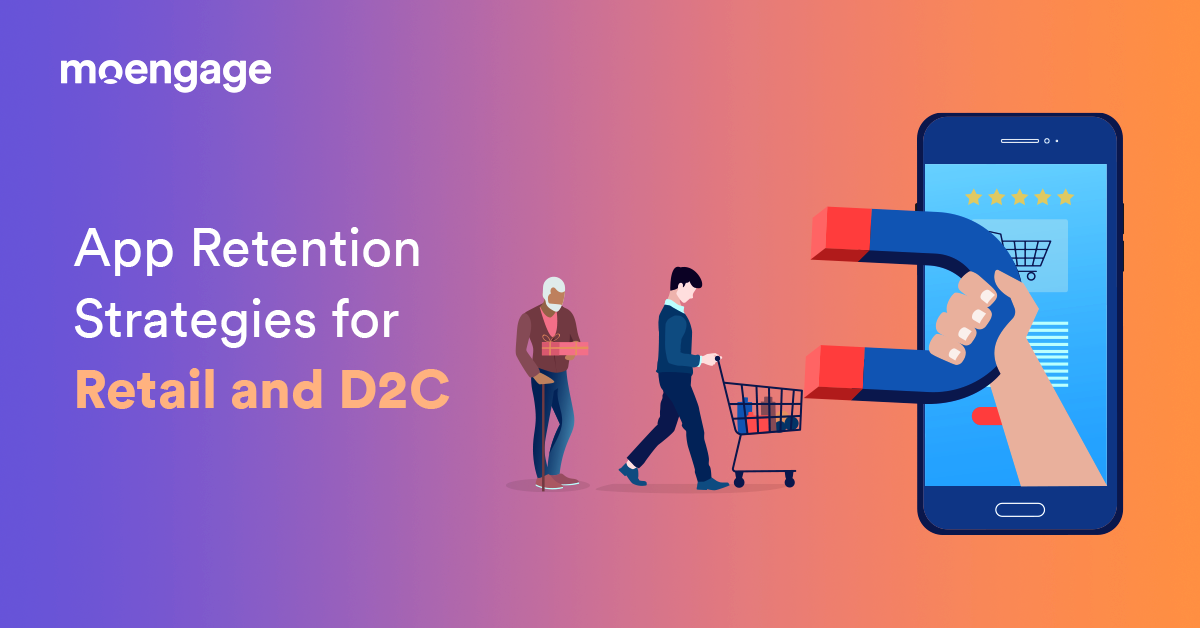
Reading Time: 8 minutes
Customer loyalty has become a rarity in today’s times. Customers are spoilt for choices as they have several channels and brands to choose from while shopping. They do not hesitate to switch to another brand if their experience is bad. Conversely, 77% of customers claimed to be loyal to a brand if the product quality was good.
Customer loyalty is even more critical for Direct to Customer (D2C) brands as they are competing with their direct competitors and marketplaces, such as Amazon.
And considering that D2C sales are expected to reach $175 billion by 2023, having a customer retention strategy is essential. It will help your D2C brand to thrive in this hyper-competitive, forever evolving space.
But what should you do to build customer retention strategies, and at what stage should you start building them? Let’s explore these questions in detail.
Why retain customers?
First, let’s understand why customer retention is so necessary.
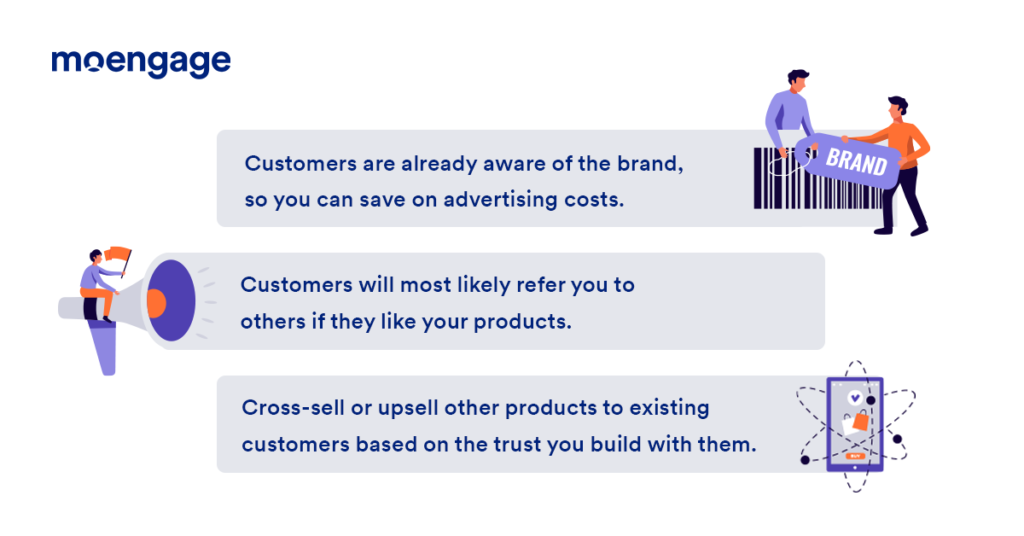
According to a Harvard Business School survey, a 5% increase in D2C retention could lead to 25% more profits. Take Nike, for example. They generated over $16 billion in 2020 through D2C, a remarkable jump from $6.6 billion in 2015. Repeat customers also constitute 40% of your average sales. So, it’s clear that customer retention is more profitable than acquisition. There are other reasons too:
- Brands do not have to spend extensively on marketing. Customers are already aware of the brand, so you can save on advertising costs. An Invespcro study showed that there’s 60-70% more chances to sell to an existing customer as compared to the 5-20% chance of selling to a new customer.
- Another advantage of retention is that customers will most likely refer you to others if they like your products. Customers trust a product when their friends and relatives recommend them. So, brand advocacy and word-of-mouth marketing can help you improve your sales.
- You can upsell or cross-sell your other products to them based on the trust you build with your existing customers. This will help you to boost your sales further and improve your profits.
When to retain customers?
D2C brands often pay little attention to retaining customers after onboarding them. Another issue is that they are unaware of the right time to implement the retention strategies. You must first know that retention has to happen at every stage of the customer journey. It cannot be a one-off activity that you occasionally do to reduce customer churn. Customers have an average of ten apps downloaded on their mobile phones. So, you are essentially competing with ten more brands for customers’ attention. You must engage with your customers regularly to retain them, and it must be done at the right moment with the right content. You could use the following techniques to know the right time to engage with your customers.
Use micro-moments:
Learn to recognize the micro-moments and leverage them to engage with your customers and improve conversions. For example, if a customer has added a product to the cart and abandoned it, you can gently nudge them with reminder notifications to complete the checkout process. If a customer is searching for an out-of-stock product, don’t just show them that message. Encourage them to add the product to the wishlist, so you can notify them as soon as the product is in stock. You could also notify them when there’s a sale or a new arrival. While frequent communication is critical, ensure that you don’t overdo it. Ensure that your communication is contextually relevant and leads to micro-conversions.
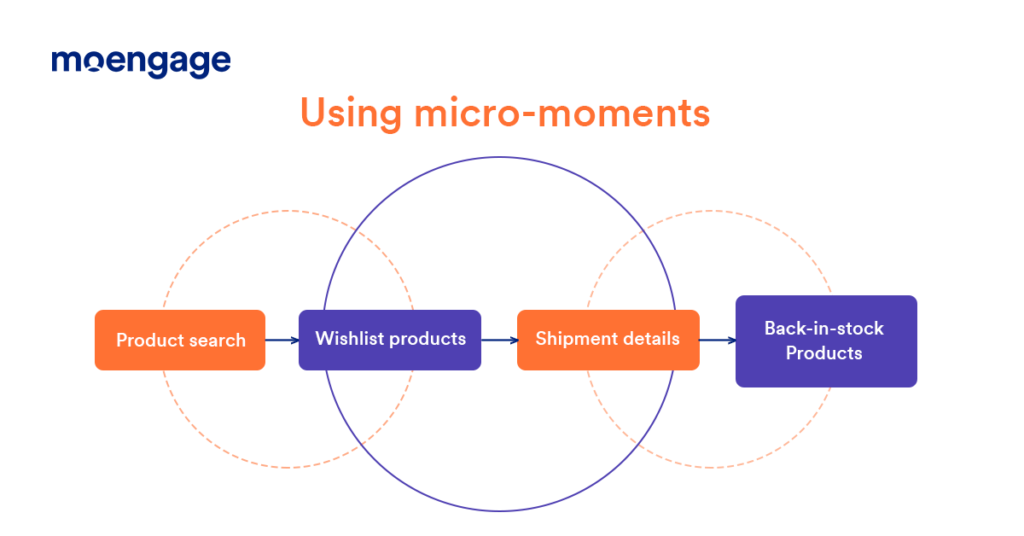
Identify the key drop-off moments:
Another thing to look out for in the customer journey is the drop-off moments. Drop-off moments are those moments that could have led to sales, but were lost due to various factors such as irrelevant messaging, delayed notifications, or a confusing interface. Find out what’s leading to the drop-off and try to fix it. For example, the customer might add a product to the cart but abandon it because the checkout experience is time-consuming or confusing, or the customer may go to the product page but not purchase it because the description does not clearly address their needs. A bad experience could lead the customer to abandon your brand. Hence, fix them before you lose sales unnecessarily.
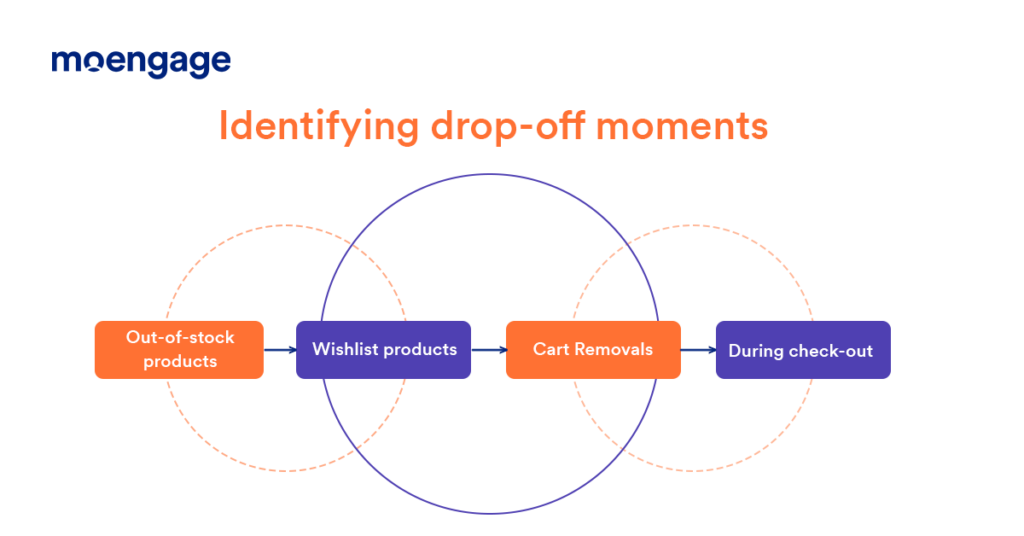
Take a complete look at the customer’s journey to find the right moments to engage with them. If you have an offline presence too, ensure that you offer a connected and seamless experience to your customers across all the touchpoints. Eliminate the silos between the different teams to improve the customer’s experience and deepen your relationship with them.
How to retain customers?
There are two main customer retention strategies that you must know.
Core app retention strategies:
The core retention strategies are aligned with your core customer values. When it comes to implementing core strategies, every department – from sales, marketing to customer success should be involved in improving customer retention. It must be made a part of your organizational culture. This will make your teams naturally customer-centric and enable you to optimize your retention strategies to increase customer lifetime value (LTV). Monitor the outcome regularly to improve your core retention strategies.
Optional app retention strategies:
These strategies would vary depending upon your industry and product offerings. For example, the average retention rate in the apparel category is just 26%, but almost 60% of the revenue comes from them. Meanwhile, the high-performance sports apparel category has over one-third of the retention rate with almost 64% of the revenue coming from them. Although both deal with apparel, the retention tactics differ a lot. Sports apparel, for instance, is niche and caters to specific demography.
So, their retention tactics are based on demonstrating their authenticity and creating high-quality videos related to sports. Normal apparel brands could focus more on improving their checkout experience or engaging customers in the designing process. A coffee brand could engage with customers by sending them smart reminders to replenish their stock or sending them free samples of new products to make them feel a part of your brand. Spend time understanding your customers deeply and leveraging marketing automation tools to tailor their experiences and retain them.
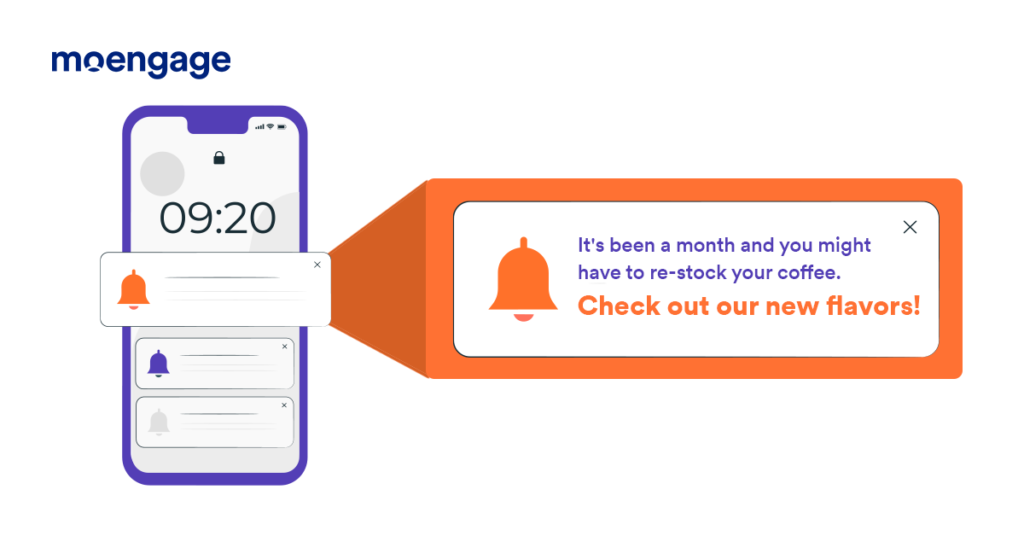
4 app retention strategies you can use
1. Determine a north star metric
A north star metric is that one metric that indicates the performance of your business. You need to first determine that single metric that you will measure consistently. These metrics could be monthly active users (MAU), average customer lifetime value, churn rate, repeat purchase ratio, etc. Ensure that the north star metric is easily achievable and that every employee in the organization works towards achieving it. Study your customer’s behavior and how they engage with your brand at different stages of the customer journey. It will help you determine that elusive north star metric and develop strategies to achieve it.
2. Place the metrics based on the customer journey
Apart from the north star metric, you must also measure other metrics at different customer journey stages to reduce customer churn. For example, study how your customers engage with your app after they install and signup. Do they stop using the app after signing up or after making a first-time purchase? Did they stop using the app after making a first-time purchase? Were they frequent buyers who stopped using the app after a while? It will help you identify the potential areas of improvement to address. Some metrics that you could calculate are:
Customer lifetime value (LTV): This metric will tell you how much money the customer is likely to spend during the entire lifetime. The LTV is calculated as:
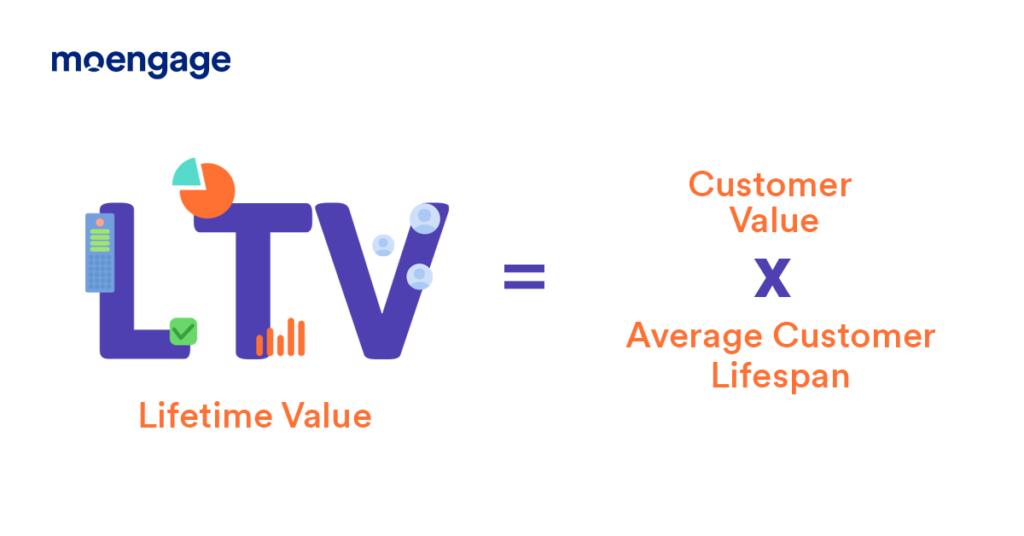
Average Order Value (AOV): It tells you the average total of every order placed with the brand in a specific period. AOV is calculated as:
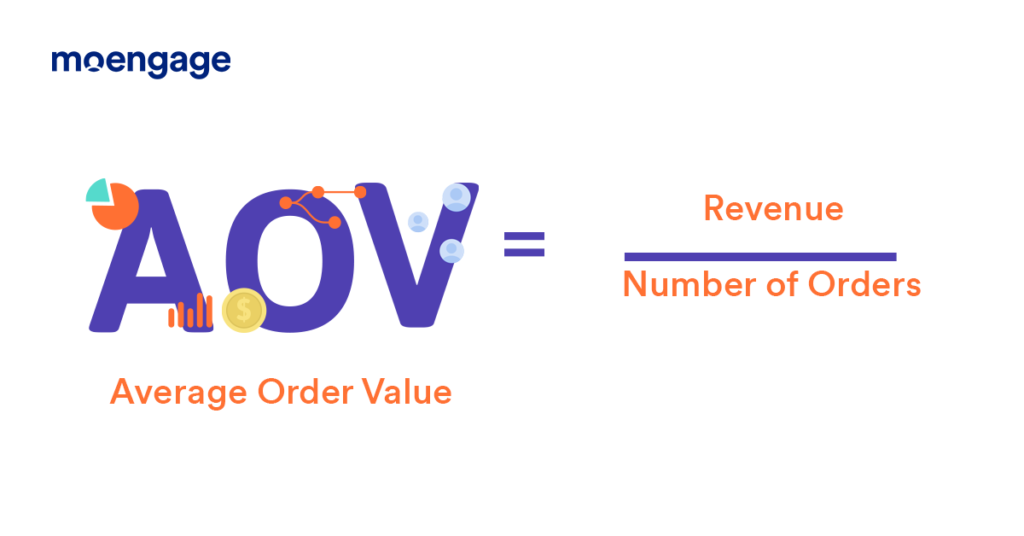
Revenue share from returning customers: It’s the revenue share you earn from repeat customers, i.e., those who have purchased at least two times within a particular period. It is calculated as:
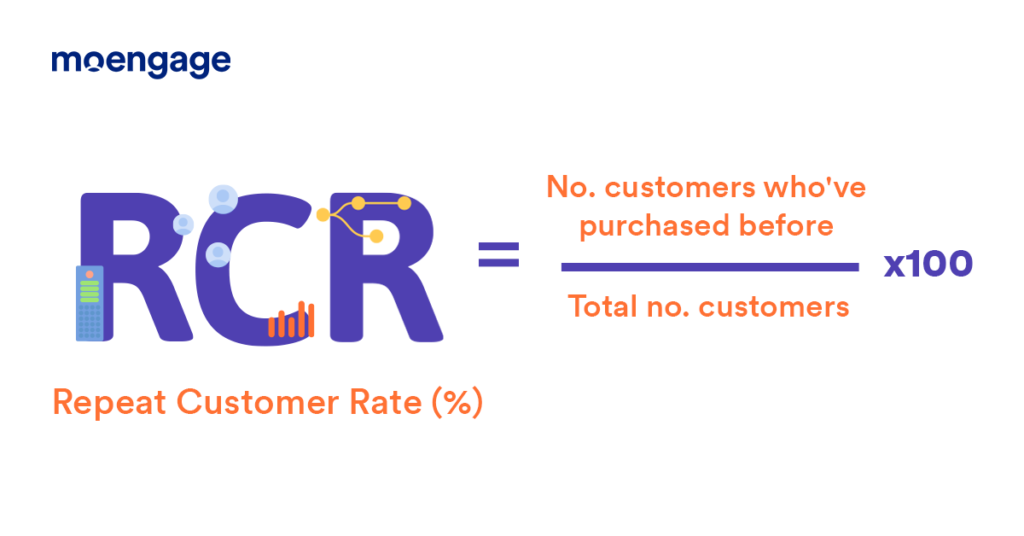
There are many more metrics such as customer churn rate, customer retention rate, and rate of descent that you can measure at various stages of the customer journey to know the retention success.
3. Build retention programs
Once you know what works for your customer and what doesn’t, you can build your retention strategies accordingly. You can adopt various strategies such as:
Building a loyalty program:
Study how your customers engage with your D2C brand. If they are frequent buyers, you could build a loyalty program to deepen your relationship with them. Some tactics that you could use include giving them a special preview of your newly launched products, free samples, special discounts, etc. Reward your customers to show that you value them. Starbucks, for example, has one of the best loyalty programs. From a free drink on your birthday to preparing a personalized beverage even before your turn comes, Starbucks does some unique things to make their customers feel special. Similarly, Ikea offers an oops-assurance to its members. So, if something breaks during transportation or assembling, the company would replace that part for the customer for free.
Create a referral program:
Referral is another way to engage with existing customers and acquire new customers. You can reward your customers with special discounts, exclusive offers, cashback, etc., every time they refer your brand to a friend. Take the example of the US-based digital-first cosmetics brand Glossier. Glossier receives 70% of its online sales from peer-to-peer referrals. Glossier based its entire strategy on user-generated content (UGC). They cherry-picked high-quality content creators and invited them to become ambassadors for the brand. These ambassadors got a special coupon code to promote Glossier products and got a cut from it every time a product was sold through that code.
Launch reactivation campaigns:
Sometimes, a customer might just stop engaging with your brand. Identify the segment that is about to drop off and launch a reactivation campaign to target them. Send them personalized communication based on their recent purchases or give them special incentives to encourage them to re-engage with your brand. Sephora, for instance, used a loyalty program with a deadline as a way to re-engage with customers.
4. Establish customer journey
It’s important to have clear visibility of your customer’s journey to plan a solid retention strategy. Your customer journey could be divided into three sections – the crawl stage, the walk stage, and the run stage. In the crawl stage, you build the foundation of the customer journey. Then the walk stage, you identify the triggers and send the right messages to nudge them into engaging with your brand. Finally the run stage, you understand how your customers engage with your brand and hyper-personalize your communication to retain them. Take Sainsbury’s example. They developed a three-point strategy of segment -> target -> engage to create a connected experience for their customers and personalize their experience. Tokopedia is another example that reduced customer churn by using automated workflows to send the right message to the customers at the right time and improve customer retention by 60%.
These are some simple strategies that you can implement to improve customer retention in your app. You can also use customer engagement platform to build custom workflows and identify the triggers where you can take action to engage with customers. We hope you find them useful and easy to implement.













